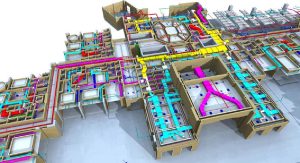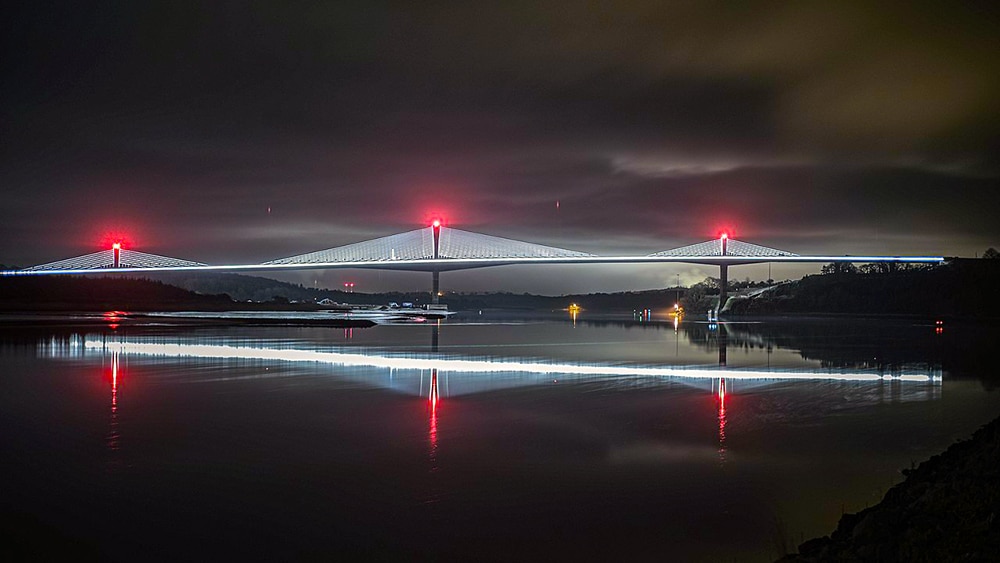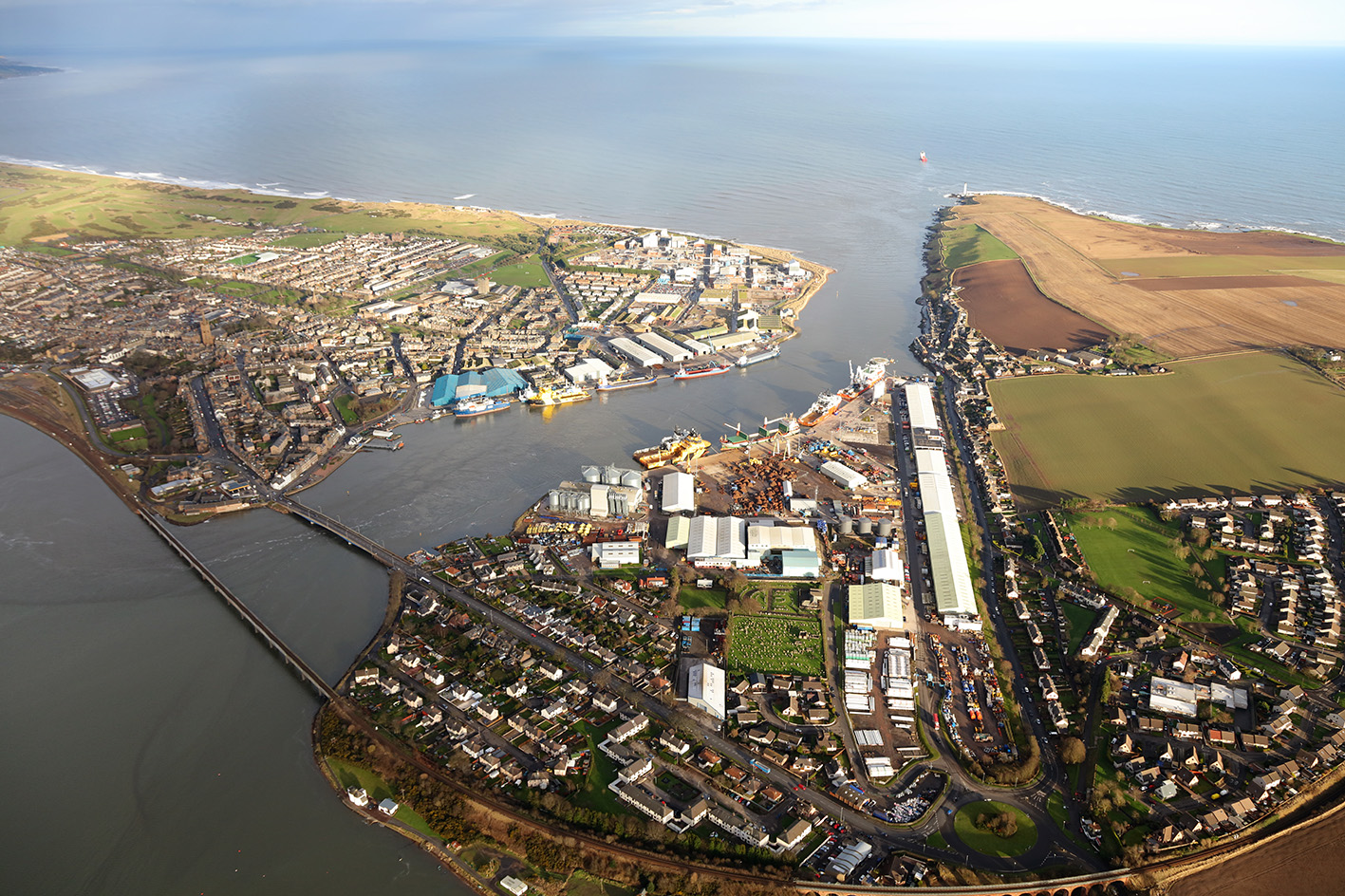

The Rose Fitzgerald Kennedy Bridge (named in honor of President John F Kennedy’s mother), also known as the N25 New Ross bridge, over the river Barrow in Ireland, is globally recognized to be an engineering marvel. The bridge is part of the Trans-European Transport Network (TEN-T), a planned network of roads, railways, airports and water infrastructure in the European Union, and has a strategic role to play in the Atlantic Road Corridor connecting Pink Point in Kilkenny to Stokestown in Wexford. This makes it an important segment of the larger N25 New Ross Bypass Public Private Partnership (PPP) project that encompasses 15 kilometers of roadworks (single and dual carriageways, roundabouts, grade separated junctions, and various realignments), inclusive of 29 structures (three road over-bridges, seven road under-bridges, a railway over-bridge, three retaining wall structures, and other minor structures). The PPP project is aimed at delivering an efficient transport route on the N25 Cork to Rosslare corridor in order to improve local and national connectivity.
The town of Wexford had been experiencing a need for a second river crossing and bypass since the 1980s, due to traffic bottlenecks occurring at the older O’Hanrahan Bridge. The steady increase in road traffic led to delays with tailbacks reaching several kilometers during peak hours. The frequent congestions and heavy freight volumes eventually became the reason for significant economic losses in the region. The new bypass and an alternate river crossing were planned and designed to reduce travel time by at least 30 minutes, meet the increasing demand for connectivity by the growing population base, and stimulate trade and commerce in the region. Thus, TII proposed the 15 km N25 New Ross Bypass project in 2016, to be built at an expected cost of USD 253.3 million (€230 million).
Touted to be the largest bridge in Ireland, the Rose Fitzgerald Kennedy Bridge was built in 16 distinct consecutive phases. The bridge deck stands at a height of 36 meters above the river Barrow, providing ample navigational clearance for shipping traffic to enter the port of New Ross. The 887m long bridge has nine spans, with the length of the main span stretching to 230 meters and each of the lateral spans stretching to 95 meters. A distinguishing feature of the bridge is the use of an extradosed design, with the longest post-tensioned box-girder sections in the main span.
The bridge was finally opened to traffic over the weekend of 25th-26th January 2020, in a ticketed event.

Challenges in Design and Construction: As the longest bridge in the world, the design and construction process of the Rose Fitzgerald Kennedy Bridge posed some challenges for the stakeholders. During the design stage, there were challenges in the areas of wind testing and analysis, prevailing ground conditions, hydrodynamic modeling, ship impact analysis, climatic conditions, and effects of dynamic crowd loading.
During the construction stage, the primary hurdle was related to the use of high-strength concrete (including C50/60, C60/75 and C80/95) for the large spans, which made it difficult to maintain structural integrity.
Key Stakeholders Involved
Transport Infrastructure Ireland
Mott MacDonald Ireland
N25 New Ross Bypass DAC, comprising
New Ross Joint Venture (NRJV), comprising
Drones: TII conducted Unmanned Aerial Vehicle (UAVs)/drone surveys along the New Ross bypass and bridge in May 2017 and again in May and June 2019. In May 2017, drones were used to map and collect data of the construction site, while in 2019 they were used to monitor the construction progress and evaluate its alignment with the 3D models designed in BIM.
Building Information Modelling (BIM): Arup, Carlos Fernandez Casado, Eptisa and SYM ─ the designers of the project ─ used BIM to address the several criticalities of the complex bridge design. Elements such as steel props, deck slab, and towers were analyzed via 3D finite element models developed on Abaqus and Sofistik software suites. These software suites were further integrated on Autodesk’s AEC solutions ─ Revit and AutoCAD ─ to optimize the design process. BIM drawings were also used to document the 3D model design and a real-time model of the constructed bridge for further use in the operations and maintenance phase of the construction lifecycle.
Value Proposition: Ever since the Rose Fitzgerald Kennedy Bridge opened in January 2020, it has helped reduce the traffic congestion on alternative routes and cut down travel time for many users by up to 30 minutes.
During the construction phase in particular, the use of drones saved considerable cost and time compared to manual inspections of the site. Simultaneously, drones could get much closer to the survey goal (length area), resulting in higher data density, resolution, and overall survey quality. Further, this entire exercise was carried out in half the time taken by manual surveys, resulting in efficient project planning and management.
The use of BIM simplified the construction process of the complex structure as all stakeholders could coordinate and communicate on the common data environment created within the BIM software. Using BIM, the stakeholders could track the progress of the project, adjust costs as changes in design or construction processes occurred, optimize the design and construction process, and also optimize materials used in the project.



Tucker is former President and CEO of IONIC Enterprise, which was recently acquired by Leica Geosystems.

A UK-first proof of concept trial for the delivery of medical supplies – including Covid-19 test kits – to vessels at sea is to be held at Montrose Port this
© Geospatial Media and Communications. All Rights Reserved.